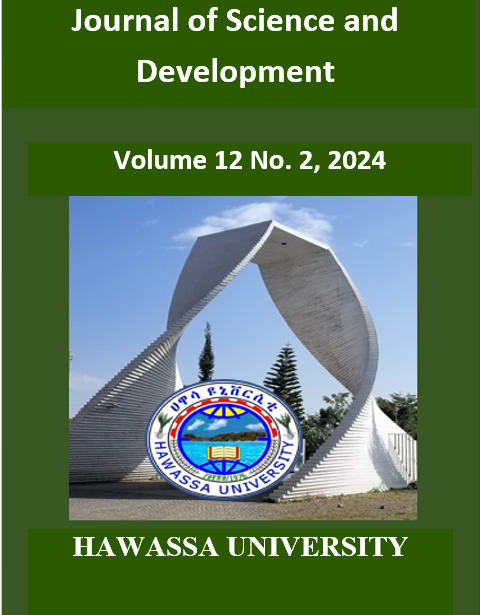Distribution and virulence diversity of wheat stem rust races (Puccinia graminis f.sp. tritici) in Ethiopia
Keywords:
Phenotype, Race analysis, Virulence evolution, Wheat rustAbstract
Wheat stem rust (Puccinia graminis f.sp. tritici) is the major constraint to wheat production worldwide. Because of the sudden changes in stem rust pathogen race patterns, commercial wheat varieties become vulnerable to the pathogen. The present study aimed to identify the races of stem rust pathogen and examine virulence diversity in the pathogen population in the study areas. To achieve these, surveys were conducted in 464 wheat fields across the Amhara and Oromia regional states of Ethiopia during the 2017 cropping season. Four to six wheat stem samples infected with Puccinia graminis f.sp. tritici (Pgt) were collected from each farmer and experimental station, where wheat is a key crop and stem rust is known to occur following the international stem rust live sampling collection protocol. Sixty stem rustinfected wheat samples were collected from the study areas, of which only 48 were viable. Three races of the stem rust pathogen, namely, TKTTF, TTKSK, and TTRTF were identified from 48 isolates. Of these, TTRTF which was detected in both regions is a new race for Ethiopia. Most of the genes possessed by the differentials were ineffective against one or more of the tested races except Sr24. The most important resistance gene Sr24, present in the majority of Ethiopian wheat cultivars, was effective against all races identified in this study. Thus, the use of effective Sr genes, either individually or in combination, will be crucial for developing wheat cultivars with a broader base of stem rust resistance. Regular monitoring of further virulence evolution is recommended to identify the emergence of new races for future breeding programs. Due to the limited number of samples analyzed in this study, future study with a large sample sizes is recommended to draw more conclusive findings regarding the Pgt population in the study areas.
Downloads
Published
Issue
Section
License
Copyright (c) 2024 Elfinesh Shikur Gebremariam, Tsegaab Tesfaye Tesfaye

This work is licensed under a Creative Commons Attribution 4.0 International License.
The author(s) of the individual articles remain the copy right of their articles.

